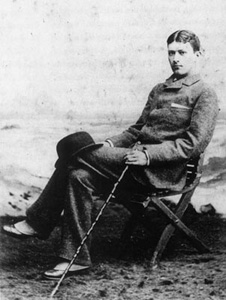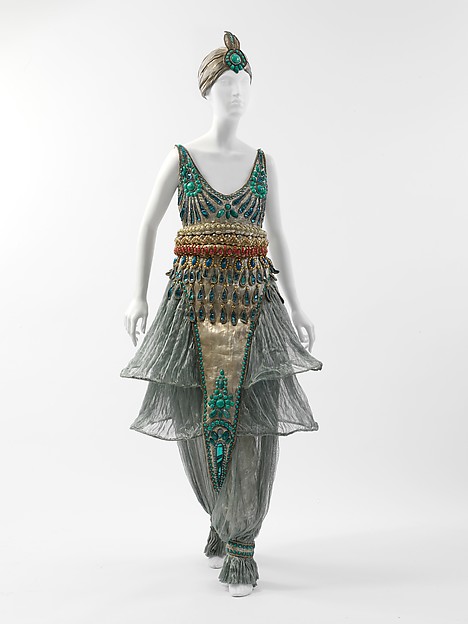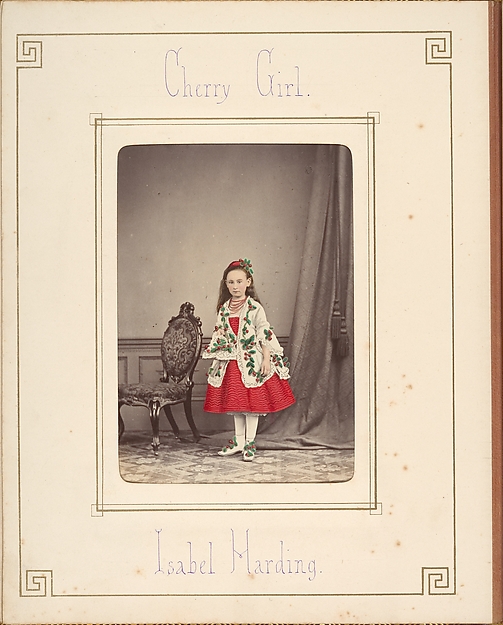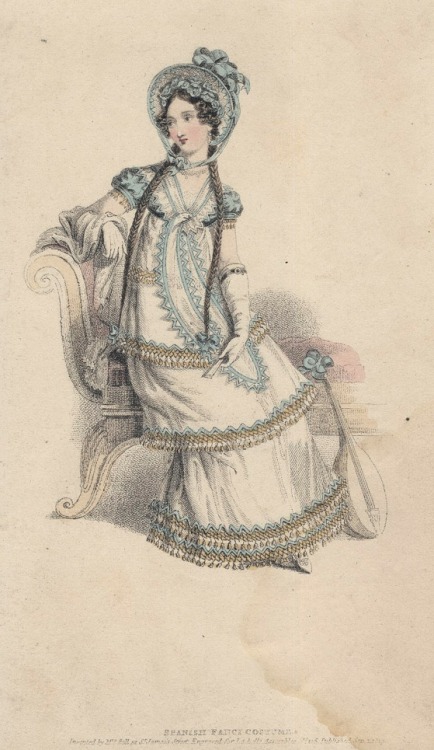The September issue of
Vogue has a spread dedicated to Edith Wharton shot by photographer Annie Leibovitz on location at The Mount (Wharton's home in Lenox, MA). As I am still dying to go tour the estate (but not until I finish the yachting costume I had to sideline for all of the August insanity) and am waaay behind on my Newport posts, I thought I would quickly share some pictures.
 |
| via Vogue.com |
Those are some fabulous stairs. The Mount was built by Edith at Teddy in 1902 and designed by Ogden Codman, jr., based on 17th century English estates. Codman spent much of his youth in France before attending the Massachusetts Institute of Technology (MIT) in 1884. He opened his first office in Boston before moving his base of operations to New York in 1893, which makes sense for someone in a business primarily funded by the wealthy elite. Codman also opened an office in Newport, which is where he met Edith Wharton. She hired him to redesign the interior of Land's End, her Newport home.
 |
| the sun room in Land's End, Newport |
Wharton and Codman shared similar ideas of architecture and design, which lead Wharton to introduce Codman to Cornelius Vanderbilt, who commissioned the design of the second and third floors of The Breakers, his new Newport "cottage." Wharton and Codman also co-authored a book on interior design called
The Decoration of Houses in 1897. It was Wharton's first published book, although her stories and poems had been appearing in journals for years.
 |
| Safran Foer as Codman, far right (standing) |
 |
| Ogden Codman, Jr. circa 1890 |
Although she left The Mount in 1911, Wharton retained a strong emotional attachment to the estate. It was where she published her most famous (or infamous, I supposed, depending on your social position) novel,
House of Mirth, and where she entertained many friends. These guests included many artistic giants of the time, including artist Daniel Chester French and author Henry James.
 |
| artist Nate Lowman as French |
French, a sculptor, moved with his family to Concord, MA in 1867. Daniel had been "whittling and carving things from wood and gypsum, and even from turnips, as many boys do" (
May Alcott, a Memoir introduction by French). His creations--such as bullfrogs out of turnips--lead to Daniel French's father to mention him to the community's artist, May Alcott. (May, who deserves a post of her own someday, was the youngest sister of Louisa May Alcott, and the inspiration for the character of Amy in Louisa's novel
Little Women.) May gave French his first art lessons and encouraged him to pursue what he loved.
 |
| Daniel Chester French circa 1902 |
 |
| The larger-than-life statue of Lincoln in the Lincoln Memorial. Did you know it was done by French? |
His studio and summer home, Chesterwood, is located in the Berkshires near The Mount. While I don't know much about his relationship with Wharton, their shared love of horticulture is mentioned in French's wife's memoirs. Given that they were neighbors and Mrs. French knew Edith, I think they probably at least knew each other.
 |
| Jeffrey Eugenides as Henry James, left |
Henry James was born into the wealthy James family in New York and spent much of his early life alternating between Europe and America. Perhaps I love him so dearly because is later works have been compared to impressionist paintings, which I also love, but really I think it is how well he captures the personality of a group of people as a unit. My favorite of his novels,
The Bostonians, does just that. It's harsh, but I love it and I think much of his descriptions could still apply today.
James and Wharton met in the 1880s, but it wasn't until the early 20th century that they actually became friends. While at first intimidated by the literary giant, James eventually became a literary adviser and close friend to Wharton.
 |
| Wharton and James on a motor tour in 1904 (in the back seat) |
I might have to actually buy the September
Vogue, just for this spread. There are several more pictures, and a great
Behind the Scenes piece, on the
Vogue website. I encourage you to check it out! I think Wharton would have rather been portrayed by an author, but that's truly my only complaint.
One last thing: Leibovitz shot at The Mount previously as part of her photographic-journey-turned-coffee-table-book
Pilgrimage, which I also recommend. You can see the photographs
on tour at the Concord Museum.













.jpg)






































